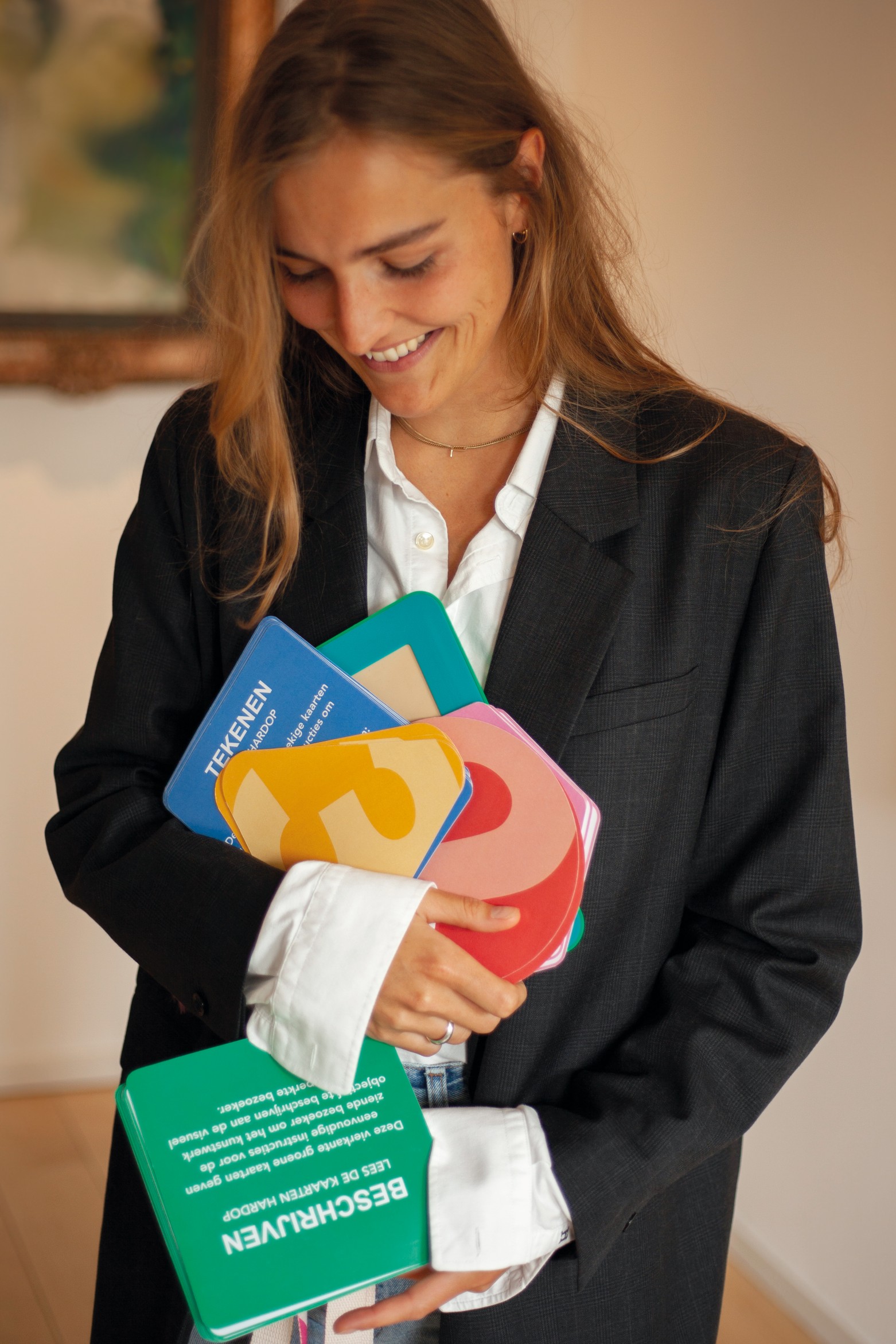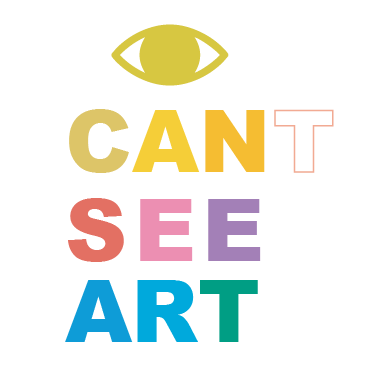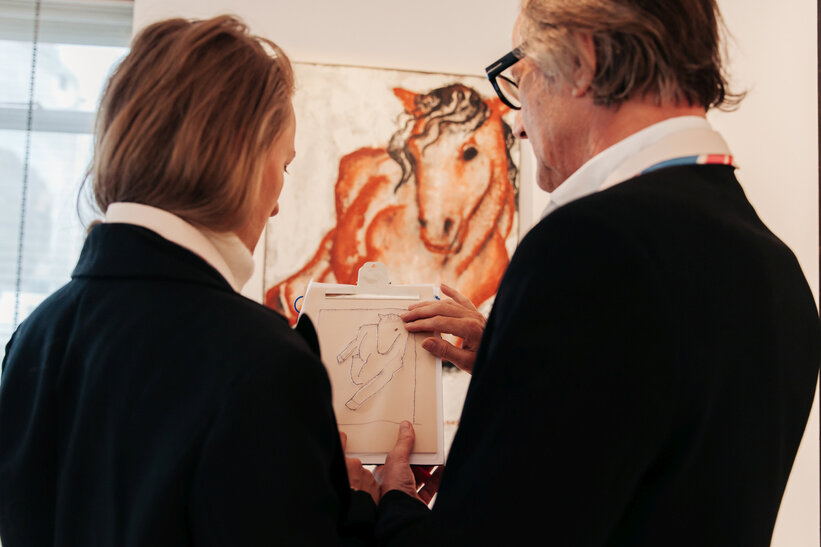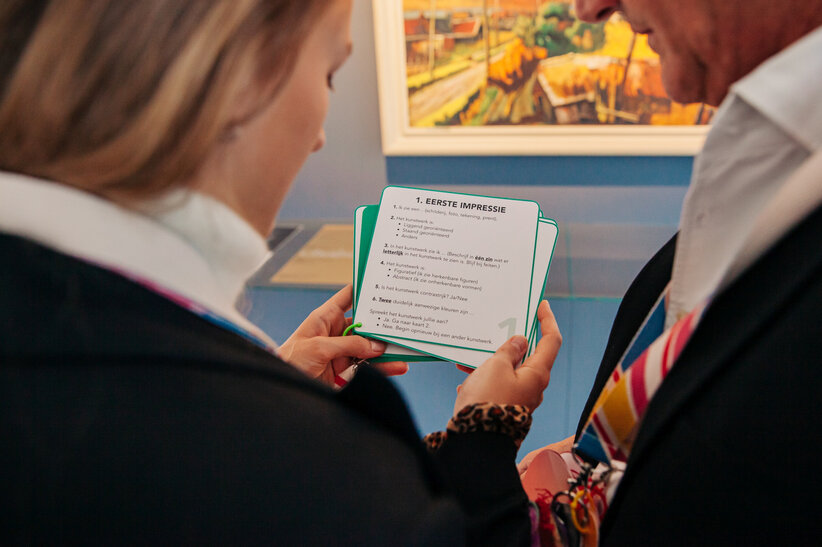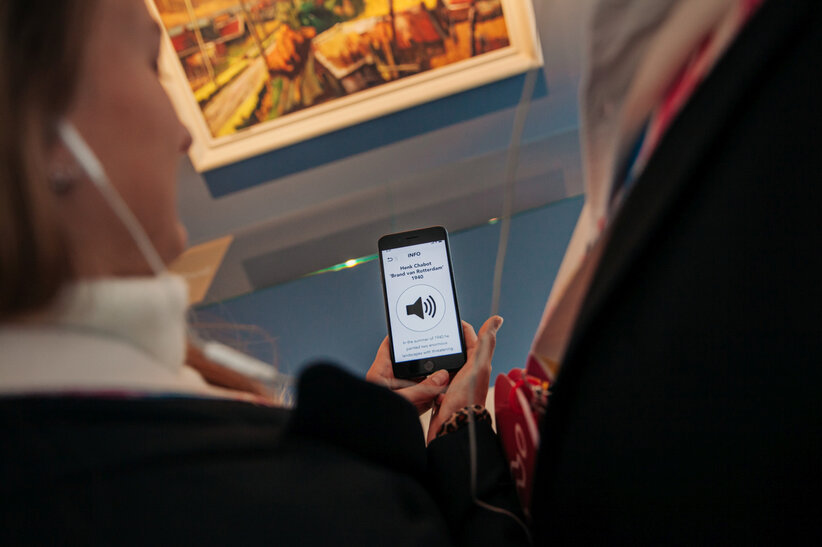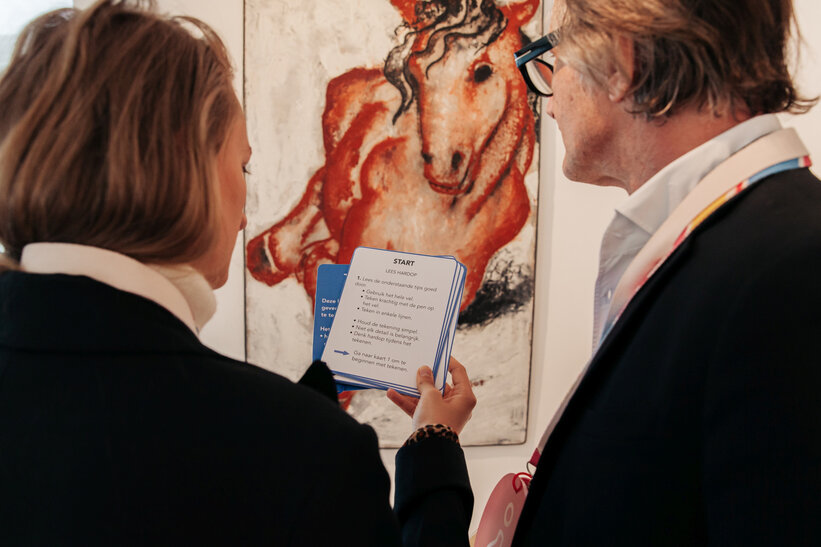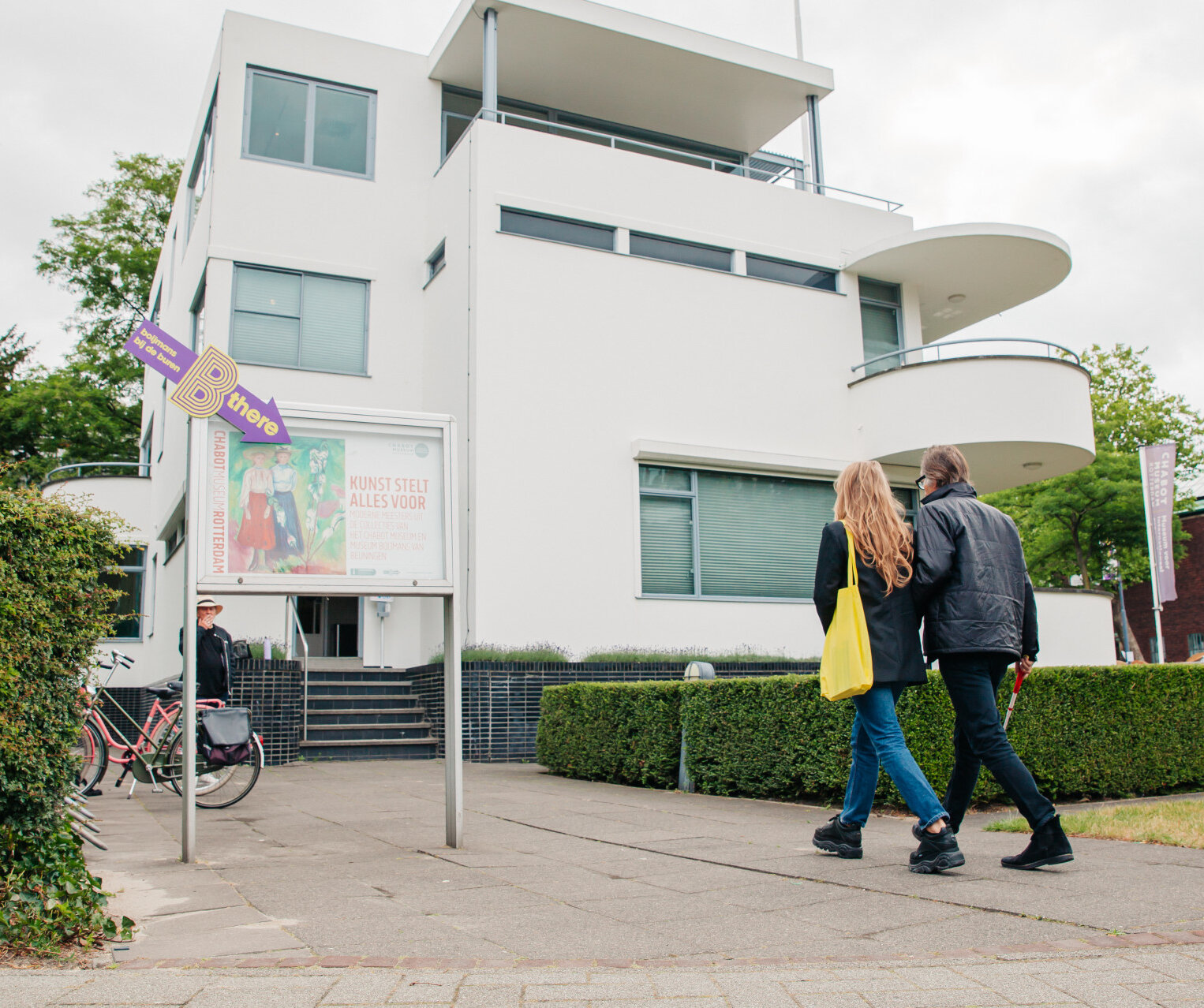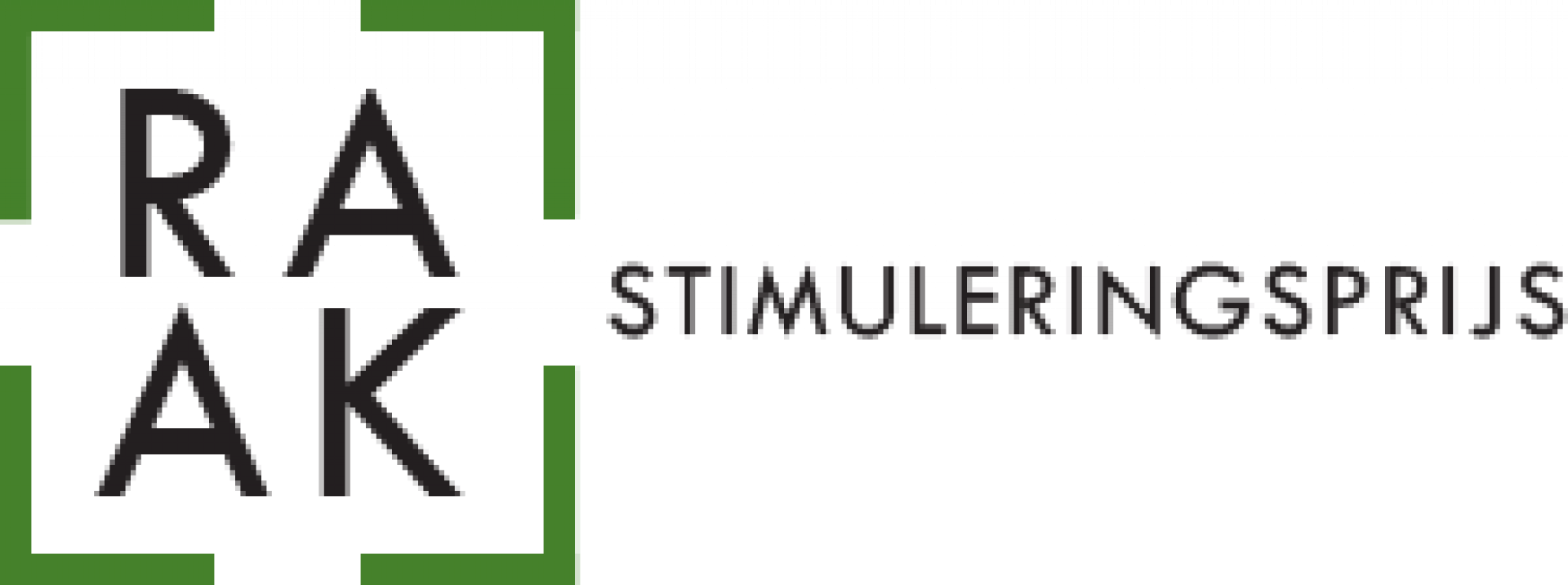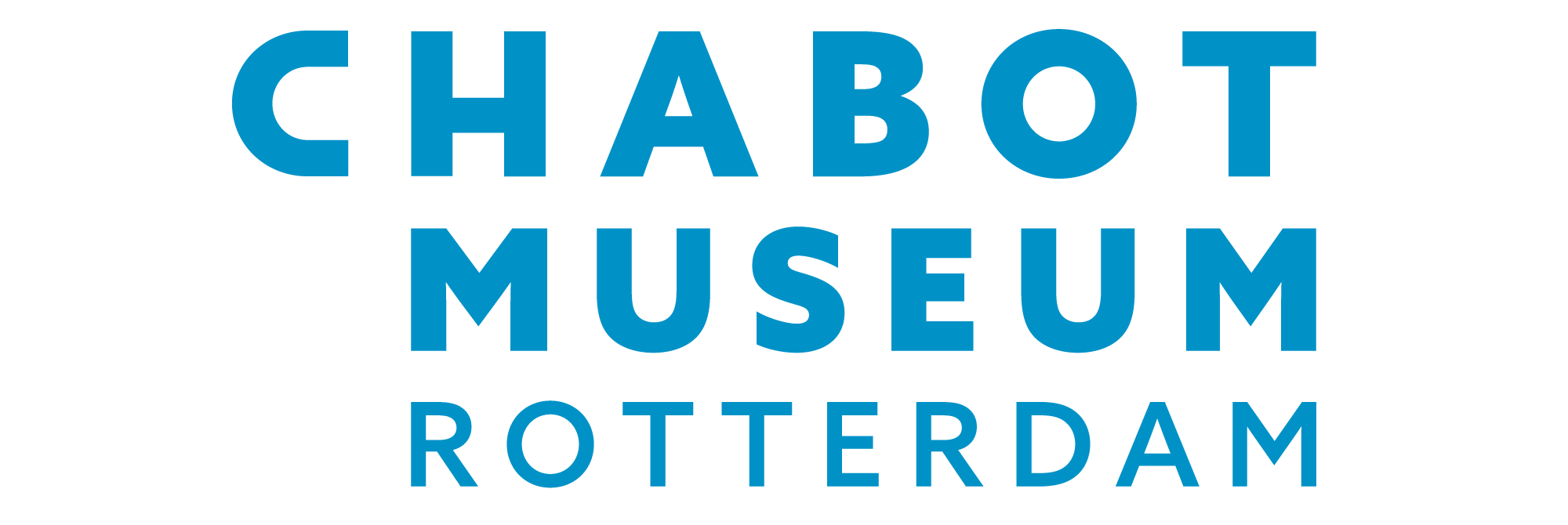Graduation project helps museum visitors with visual impairment to explore art
For her graduation project at TU Delft’s Faculty of Industrial Design Engineering, Josephine de Vries - together with the Chabot Museum in Rotterdam - designed ‘Eye Can (t) See Art’; a toolkit that helps visually impaired museum visitors accompanied by a sighted companion explore the artwork together. The project has won second prize in the RAAK Stimuleringsprijs, which encourages museums to adapt their collections for people with visual impairments.
Discovering together
Many visually impaired people prefer to go to the museum with a sighted friend, partner or family member. They often rely on special tours, specific installations, or multi-sensory tools adapted for specific artworks. Like all museum visitors, they would like to choose for themselves when and where they go the museum and what they will explore. However it can be very difficult to create a similar experience to a sighted person, because their perception is so different.
Not many designs exist to experience art together with a sighted companion in an equivalent way during an independent museum visit. That’s why TU Delft’s Josephine de Vries decided to work with the Chabot Museum to design the toolkit ‘Eye Can (t) See Art’ for her graduation project. This kit contains tools and instruction cards for visually impaired museum visitors and sighted companions to discover the artwork in an equal, rich, and playful manner. The toolkit can be taken everywhere, all the time, and in all art exhibits.
Josephine de Vries comments on her design: "The playful interactive tools are for everyone with a visual impairment, for young and old, and can be used for every artwork imaginable. This idea brings visually impaired and sighted visitors together; it creates equal social interaction, which is currently deemed very difficult. My design offers the opportunity to do new explorations in a fun and educational way, both for the visually impaired and the seeing visitors. Bringing those worlds together is what I like about this project! The Chabot Museum’s living room offers space for personal attention. This makes the museum particularly suitable for the target audience to experiment in peace, and in this way to improve and refine the toolkit."
“Eye Can(t) See Art”
The toolkit consists of a variety of themed cards with instructions on how to objectively describe a work of art, how to ask critical questions about it, and how to convey the work to others, for instance by creating embossed drawings of the artwork you can run your fingers across. As well as these easy-to-understand instructional cards, the kit contains a number of other tools which stimulate people to draw on multiple senses and communicate in new ways. The toolkit also contains an app where you can find background information on the artwork or the artist that allow you to reflect on your findings. The cards are inspired by existing observational and communication techniques which help people describe what can be seen in an artwork - fairly and without subjective judgment.
Personal art experience
The Chabot Museum Rotterdam is housed in one of the most beautiful villas in the city; a gem of the Bauhaus inspired modernist architecture from 1938. Here, you can stand eye to eye with the monumental works of Henk Chabot (1894-1949), his contemporaries, and present-day kindred spirits. The museum for international expressionism offers a personal art experience at world level in its light and open spaces.
RAAK Stimuleringsprijs
In the Netherlands, more than 250.000 people are visually impaired or blind. They can't, like others, look at artworks, objects, or other information in a museum. The RAAK Stimuleringsprijs ('Incentive prize'), this year being awarded for the fifth time, stimulates museums to make their collection accessible to people with a visual impairment.
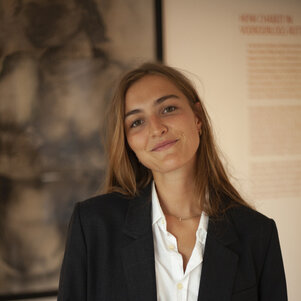
Josephine de Vries

Willemijn Elkhuizen
- +31 15 27 81041
- w.s.elkhuizen@tudelft.nl
-
Room 32-B-3-220
"One must work and dare if one really wants to live."

